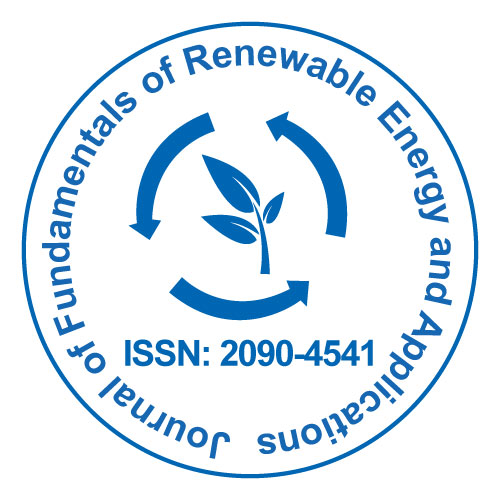
Journal of Fundamentals of Renewable Energy and Applications
Open Access
ISSN: 2090-4541
+44 1300 500008

ISSN: 2090-4541
+44 1300 500008
Sonia Shilpi, Balaji Seshadri, Nanthi S Bolan and Ravi Naidu
University of Newcastle, Australia
CRC CARE, Australia
Scientific Tracks Abstracts: J Fundam Renewable Energy Appl
It is essential to develop sustainable energy supply systems that aim to consolidate the energy demand from renewable sources and also mitigate the emission of greenhouse gases. Biogas production is a key technology for the sustainable use of biomass as renewable energy source. High energy yields per hectare can be achieved through biogas production by using a wide range of energy crops. Maize, sunflower and Sudan grass are the most commonly used energy crops. The field experiment covered five different types of energy crops grown using two types of wastewaters viz. Abattoir (AWW) and municipal wastewater (MWW) at two different irrigation rates (400 mm and 800 mm) and tap water (TW). Dry biomass yield (DBY) was assessed from a field plot experiment at St. Kilda, South Australia. Total solids (TS) and volatile solids (VS) were determined on fresh biomass samples. DBY data obtained from the field trial (all five crops) increased with increasing wastewater irrigation. The plots irrigated with AWW 400 and 800 mm showed significantly higher yield than the MWW (400 and 800 mm) and TW (800 mm) irrigated plots. The amount of biogas production was monitored every day and expressed as norm litre per kg of volatile solids (Nl kg-1 VS). Anaerobic digester was used to determine a reference methane yield for finely ground substrates under optimal conditions. Inoculum was obtained from a bolivar plant, Salisbury city council. Substrate/inoculum ratio based on volatile solid (VS) basis was used in all batch experiments, performed in 500 ml bottles (working volume 400 ml) in triplicate, incubated on a shaking water bath (70 rounds minute-1 (rpm)) at 37�±1�°C, and continued until methane production became negligible (<5 ml CH4 d-1). The methane yield per hectare was calculated by multiplication of the biomass yield and the specific methane yield. To be able to run biogas plants economically the methane yield from energy crops needs to be known. The present data show that the methane yield of energy crops depends on their nutrient composition. Maize (A800) exhibited the highest value in terms of potential methane yield (798.23 Nml CH4 gâ��1 VS).
Sonia Shilpi is a PhD student of University of Newcastle, NSW, Australia. She has been working on ‘Wastewater driven biomass production for energy generation’ as of her PhD Program. She has completed a set of exciting experiments including “Methane production through anaerobic digestion of various energy crops irrigated with wastewaters”. She has contributed to several publications and conference presentations from her research work.
Email: sonia.shilpi@uon.edu.au